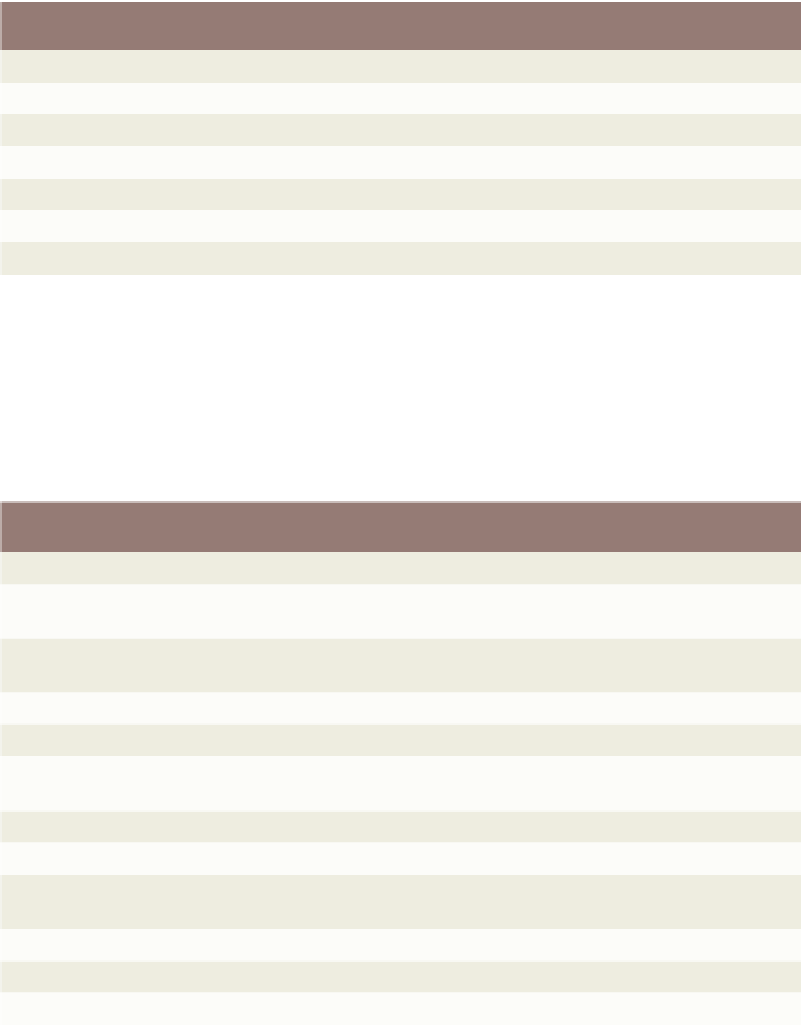HTML and CSS Reference
In-Depth Information
The <element> tag in the XSD must have a data type. Table H-11 shows the most
common data types.
Table H-11 XSD Data Types
Data Types
Description
AnyURI
A valid URI Internet address
Binary
A set of binary codes in groups of eight
Boolean
Binary logic of true or false, yes or no, on or off, or 1 or 0
Date
Represent the date as YYYY-MM-DD
Decimal
Data is any number that contains a decimal fraction
Integer
Data is any whole number not a fraction
String
Data is any set of characters
Data types can have constraints or facets. These values further define restrictions
or validations for the data contained within an XML element beyond whether it is a string
or a numeric value. For example, to specifically define acceptable values in an element,
enumeration constraint is used to list acceptable values. Table H-12 shows the common
constraints or facets.
Table H-12 Constraints or Facets
Data Type Constraints
Description
enumeration
A list of acceptable values
fractionDigits
Defines the maximum number of decimal places and value must be equal
to or greater than zero
length
Explicitly states the number of characters or list items allowed and must be
equal to or greater than zero
maxExclusive
The numeric values for the upper bound for a domain
maxInclusive
Defines the upper bounds for numeric values
maxLength
Defines the maximum number of characters or list items allowed and the value
must be equal to or greater than zero
minExclusive
The numeric values for the lower bounds
minInclusive
Defines the lower bounds for numeric values
minLength
Defines the minimum number of characters or list items allowed and the value
must be equal to or greater than zero
pattern
Defines the exact sequence of characters that are acceptable
totalDigits
Defines the number of digits allowed and must be greater than zero
whiteSpace
Defines line feeds, tabs, spaces, and carriage returns



